Service hotline
+86 0755-83044319
release time:2025-05-29Author source:SlkorBrowse:4875
Driven by the Internet of Things (IoT) technology, the smart smoke/gas alarm market in China is expanding at a compound annual growth rate (CAGR) of 25%. Data from Q1 2025 shows that high-end products featuring AI smart diagnostics, NB-IoT remote alarm capabilities, and multi-sensor fusion have surpassed 60% of market share. Behind this technological upgrade wave lies a hidden challenge that directly affects life safety — electrostatic discharge (ESD), which has become the number one threat to the reliability of smart security devices.
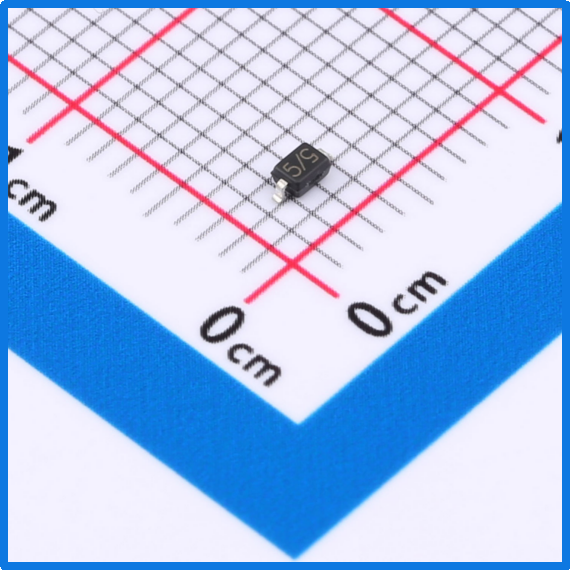
Slkor Electrostatic Discharge Diode SLESD3B5CM product photo
Laboratory tests indicate that human electrostatic charge can reach up to 8kV in dry winter environments, far exceeding the 3kV tolerance standard for consumer-grade electronics. For smart alarms, which integrate photoelectric smoke detection, semiconductor gas sensors, and wireless communication modules, ESD impact could lead to three critical issues: sensor signal distortion causing false or missed alarms, main control chip failures leading to system paralysis, and communication module malfunction disrupting alarm transmission. A reliability report from a fire electronics company points out that alarms without ESD protection have a failure rate of 1.2% in northern winters, with 75% of these failures caused by ESD events.
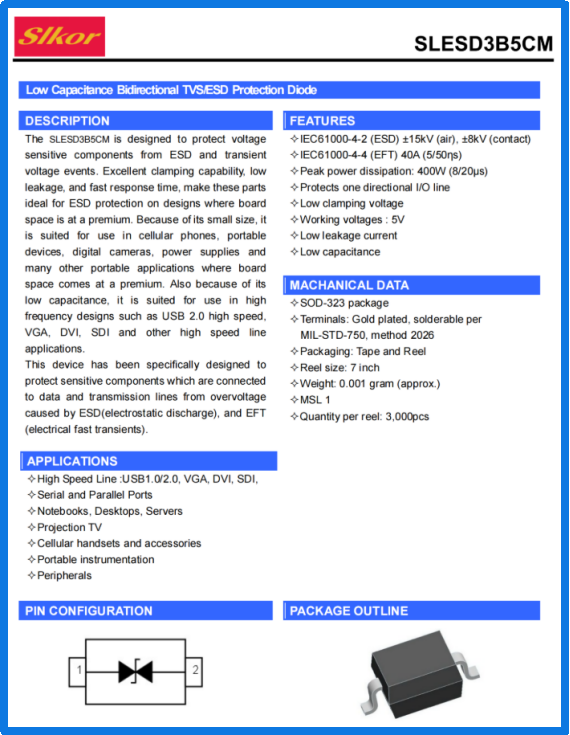
Slkor Electrostatic Discharge Diode SLESD3B5CM specification
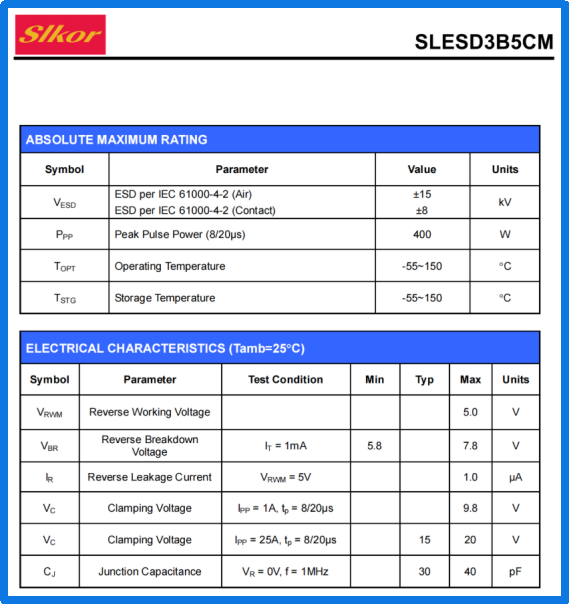
Parameters of Slkor Electrostatic Discharge Diode SLESD3B5CM
The SLESD3B5CM is specifically designed as an ESD protection device for security equipment, providing the first line of [敏感词] for smart alarms with its unique electrical characteristics. This diode, packaged in the ultra-compact SOD-323 form, operates at a working voltage (VRWM) of 5V, precisely matching the power requirements of mainstream digital circuits in smart alarms. Its minimum breakdown voltage (VBR min) of 5.8V and clamp voltage (VC) of 9.8V form a dynamic protection window that not only responds rapidly to ESD pulses but also prevents false triggering caused by power fluctuations.
The core advantages of this device can be summarized in three aspects: first, the low capacitance design of 30pF, which ensures minimal signal attenuation while perfectly adapting to the common 433MHz/868MHz wireless communication modules in smoke alarms; second, its nanosecond-level response speed, which creates a low-resistance path at the rising edge of an ESD pulse, limiting overvoltage to safe levels; and third, its outstanding surge handling capability, with a peak pulse power of 600W (8/20μs waveform) capable of withstanding the 6A (8/20μs) lightning surge specified in the IEC 61000-4-5 standard.
In the system architecture of smart smoke/gas alarms, the SLESD3B5CM is deployed at multiple electrostatic-sensitive nodes:
1. Photoelectric Sensor Array Protection: The SLESD3B5CM is connected in parallel to the signal conditioning circuit of the infrared scatter smoke sensor. Its 30pF capacitance results in less than 0.2dB signal attenuation of high-frequency modulated signals, ensuring smoke concentration detection accuracy remains unaffected. Field tests show that this solution can limit ESD impacts from contact discharge of ±6kV and air discharge of ±12kV to within the sensor's safe operating area (SOA).
2. Gas Sensor Interface Protection: For the analog signal output of semiconductor-based gas sensors, the SLESD3B5CM is used in combination with a TVS diode to form a cascaded protection network, ensuring an ultra-low leakage current of 0.1μA while controlling the clamp voltage accuracy within ±3%, meeting the resolution requirements for methane detection in the 0-10% LEL range.
3. Wireless Communication Module Protection: Integrated into the RF feed line of LoRa/NB-IoT antennas, the SLESD3B5CM has unique frequency response characteristics that achieve -1.5dB insertion loss in the 470MHz-510MHz band, while enhancing the ESD protection level to IEC 61000-4-2 standard Level 4, ensuring that the -113dBm reception sensitivity is unaffected.
4. Human-Machine Interface Protection: The SLESD3B5CM is independently configured on each signal line of the function buttons and LED indicator circuits. Its 1μA ultra-low leakage current ensures that standby power consumption remains below 5μA, in line with the 5-year battery life design requirements for smart alarms.
According to mass production data from a leading security enterprise, after adopting the SLESD3B5CM protection solution, the product's electrostatic failure rate dropped from 0.87% to 0.09%, and after-sales repair costs decreased by 72%. In wide-temperature tests ranging from -20°C to 70°C, the device's parameter drift was less than 2%, demonstrating exceptional environmental adaptability. More importantly, the device's surge protection design increased the alarm's survival rate to 98% in electromagnetic pulse weapon simulation tests.
As smart alarms evolve towards multi-modal sensing and edge computing technologies, there is an increasing demand for more advanced ESD protection devices. The upgrade direction for the SLESD3B5CM focuses on three areas: developing a low-capacitance (<15pF) model for millimeter-wave radar applications, launching an integrated protection module supporting PoE power supply, and developing adaptive protection circuits based on machine learning. These technological breakthroughs will further strengthen the security foundation of smart security devices in smart cities.
In the age of ubiquitous connectivity, fundamental components like the SLESD3B5CM act as "invisible guardians," ensuring the reliability of smart devices. The technological evolution of this device confirms an industry truth: true innovation is not only reflected in visible feature upgrades but also embedded in invisible protective details. As the "Electromagnetic Compatibility Standards for Smart Firefighting Devices" are further implemented, high-performance protection devices like the SLESD3B5CM will find broader application, driving the smart home security industry towards a high-quality development phase.
Slkor has research and development offices in Busan, South Korea, Beijing, China, and Suzhou, China. Most of the wafer manufacturing and packaging and testing are carried out within China. The company employs and collaborates with individuals and organizations worldwide, with a laboratory for product performance and reliability testing and a central warehouse located at its headquarters in Shenzhen. Slkor has filed for over a hundred invention patents, offers more than 2,000 product models, and serves over ten thousand customers globally. Its products are exported to countries and regions including Europe, the Americas, Southeast Asia, and the Middle East, making it one of the rapidly growing semiconductor companies in recent years. With well-established management systems and streamlined workflows, Slkor has rapidly enhanced the brand awareness and reputation of its "SLKOR" brand through its outstanding quality and standardized services. Its product range includes three major series: diodes, transistors, and power devices, with recent introductions of new products such as Hall elements and analog devices, expanding its presence in sensors, Risc-v microcontrollers, and other product categories.

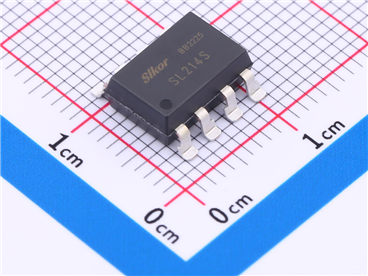
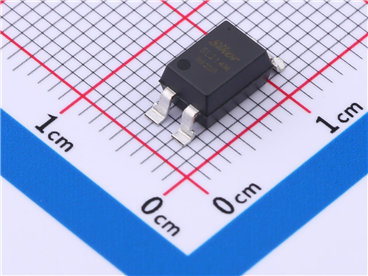
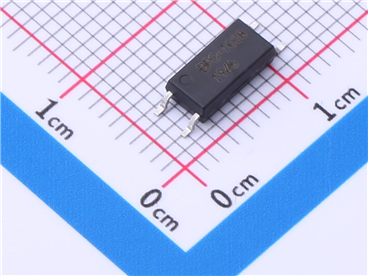
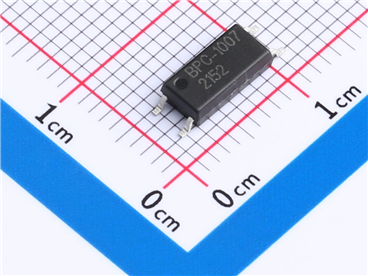




Site Map | 萨科微 | 金航标 | Slkor | Kinghelm
RU | FR | DE | IT | ES | PT | JA | KO | AR | TR | TH | MS | VI | MG | FA | ZH-TW | HR | BG | SD| GD | SN | SM | PS | LB | KY | KU | HAW | CO | AM | UZ | TG | SU | ST | ML | KK | NY | ZU | YO | TE | TA | SO| PA| NE | MN | MI | LA | LO | KM | KN
| JW | IG | HMN | HA | EO | CEB | BS | BN | UR | HT | KA | EU | AZ | HY | YI |MK | IS | BE | CY | GA | SW | SV | AF | FA | TR | TH | MT | HU | GL | ET | NL | DA | CS | FI | EL | HI | NO | PL | RO | CA | TL | IW | LV | ID | LT | SR | SQ | SL | UK
Copyright ©2015-2025 Shenzhen Slkor Micro Semicon Co., Ltd